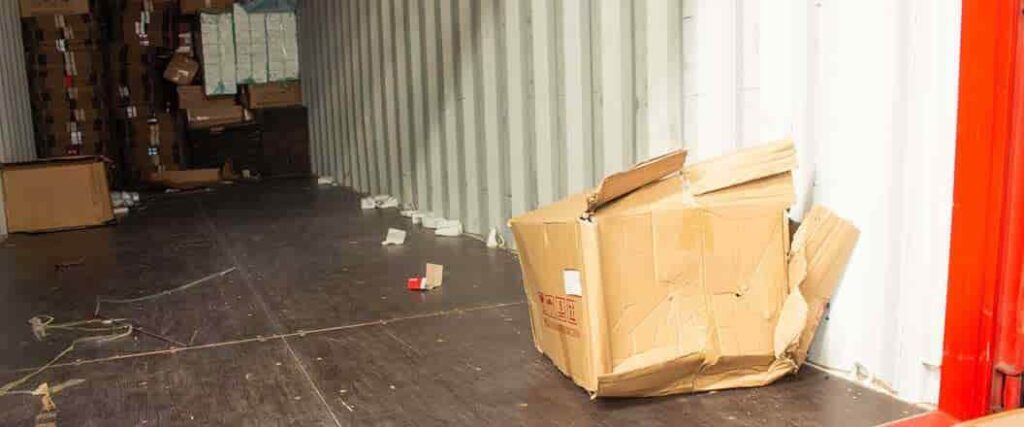
The risks of importing goods into the U.S. can be daunting. Businesses and entrepreneurs can face a multitude of challenges when bringing goods across U.S. borders. Preparing for these dangers will ensure that all operations are completed without incident.
According to Customs and Border Protection (CBP), there are many risks associated with importing. Some include:
These scenarios can cause ruin for importers. Businesses can avoid these potential dangers with research, risk management and good supplier relations.
The risks of importing can be a stressful topic for entrepreneurs and businesses to consider. Fortunately, we have information that can help you navigate these dangers.
Import risk refers to the challenges and uncertainties that U.S. businesses or entrepreneurs can face when bringing goods into the country. These dangers are a possibility with every shipment. While they won’t always occur, it’s best for importers to know about them in case something does go wrong.

Unfortunately, there isn’t one kind of danger that can challenge a shipment of imports. There are a variety of risks that could make the process of bringing goods into the U.S. difficult.
Some of them include:
We’ll explain the threat each of these present and why they occur.
Compliance and regulatory risks are a significant concern for importers when bringing goods into a U.S. port. There are many customs regulations and trade policies placed on products that come from other countries. Following these requirements can be very challenging for U.S. importers and can present a few different risks if not performed correctly.
Some compliance and regulatory dangers include:
Inaccurate or incomplete documentation can lead to a few repercussions. If an importer fails to provide the required paperwork, their shipment might be rejected, or they could face hefty penalties.
Embargoes and sanctions are another risk challenging importers. Failing to comply with these requirements can lead to severe legal consequences. This can include fines and the loss of import privileges. Finally, product category regulations are another responsibility that U.S. importers will need to address.
Certain goods may require certifications to show compliance with standards in areas like :
Complying with these product-specific regulations is extremely important. Importers who don’t follow these requirements will have to deal with legal penalties and product recalls.
If you’re worried about compliance import risks, then read our article on the 11 benefits of using a customs broker to find out how they can help.
Managing a smooth and efficient supply chain is crucial for successful importing. This type of danger can disrupt the flow of goods and impact the operations of a business. There are a variety of supply chain risks.
However, some of the most common ones include the following:
There are many types of transportation delays that can disrupt an import. Adverse weather conditions are a common cause for shipping delays. In other instances, congested ports can slow down transit times.
Delays can cause missed deliveries, which leads to upset customers. Importers must stay informed about potential disruptions to minimize these types of risks. Maintaining product quality is essential for businesses as well.
Issues with the caliber of goods can lead to financial losses. For instance, products with substandard quality or defects may need to be returned or replaced. Importers should make sure that their supplier has strict QC guidelines for the goods it provides.
Businesses must also ensure that their purveyor of products is reliable in other aspects of their operations. There are many problems that suppliers could have.
These include:
Issues like these can disrupt an importer’s supply chain. Before businesses settle on a supplier, they should vet them carefully. It’s also a good strategy to have multiple manufacturers in case one is having difficulties.
Our article on the advantages of nearshoring has some useful information on this alternative sourcing option.
There are many financial risks that importers can face. Dangers like these can inflict a monetary burden upon businesses and entrepreneurs.
Some financial risks of importing include:
Changes in currency exchange rates can significantly impact the cost of goods. A U.S. importer that purchases items from a supplier in a country with a strengthening currency can end up paying higher costs. This can affect the overall financial performance of the business.
Tariffs and customs duties imposed by the CBP and other agencies can add significant costs to imported goods. Changes in trade policies or use of new tariffs can make these products more expensive. Business must factor in these additional expenses when budgeting and pricing their goods to ensure profitability.
Shippers should try to be aware of some unforeseen costs they might be forced to pay. The details of these expenses can vary depending on a few different factors.
These include:
Importers should be aware of the fine details of their items. This will help them prepare for a variety of additional and unforeseen costs.
Some could include:
Importers can avoid or manage the financial dangers of importing with the use of hedging strategies and by budgeting carefully.

Accurate and up-to-date HTS codes, ensuring smooth customs clearance every time.
The risks involved in importing can inflict a variety of different expenses on businesses. Therefore, it’s important to recognize these costs before initiating an incoming shipment from a foreign country. This will prevent businesses and entrepreneurs from spending unnecessary amounts of money on their shipment.
Those that fall victim to the risks of importing and exporting can run into a few unforeseen, but direct costs. These expenses can have an effect on the overall financial implications of import operations.
Some examples of direct costs include:
Product purchase prices are something that all importers will have to pay. However, this expense might be charged twice if a business needs to order goods to replace an original shipment that was defective.
Additional transportation and freight costs have to be paid to return the products to the sender. We’ve included some data on the current 40-foot container rates for each primary shipping route.
| Type of Expense | Cost |
| Replacement Shipment Traveling on the Trans-Atlantic Route | $2,376 |
| Replacement Shipment Traveling on the Pacific Route | $1,336 |
| Asia-Europe | $1,374 |
Shippers should be aware that these ocean freight rates can rise and fall at any time. Customs duties and taxes can inflict direct costs on importers as well. Not paying these charges could result in fines as high as $10,000.
Incorrectly completing customs documents or not providing them at all can also result in large expenses for businesses. These costs can range anywhere between $500 to $10,000 per violation.

As we’ve discussed, there are many importing risks for foreign goods. However, proper planning and proactive measures can ensure a smooth and successful operation.
Some of the strategies that businesses and entrepreneurs can use to avoid these risks include:
We’ll show you how to use these techniques to avoid the threats to imported goods, while also saving money.
Thorough research is a crucial step that businesses and entrepreneurs should complete prior to importing. Investigating products coming from other countries can provide valuable information. This allows importers to make informed decisions.
Some aspects of a shipment that businesses should research include:
Importers must research and understand the specific regulations governing their product category. Different goods and the country they come from have an impact on which regulations will need to be followed.
Researching import tariffs and trade agreements is essential to assess the cost implications of importing products. Importers may discover they can bring their goods into the U.S. if they’re subject to preferential treatment.
Finally, researching the quality standards and certifications applicable to the goods being brought into the country is important. This will help importers avoid obtaining faulty products.
Risk management is a proactive approach that allows importers to identify and address potential dangers associated with importing goods. There are a few ways that businesses and entrepreneurs can do this.
Some include:
A comprehensive risk assessment plan identifies and evaluates potential risks at each stage of the import process. Businesses should also thoroughly research their supplier to determine their reliability. These steps will ensure common risks that pose a threat to their imported goods are addressed.
Diversifying the manufacturers that importers use is another important step to take. This will give businesses more sourcing options if one of their suppliers is unable to provide them with product.
Another way businesses and entrepreneurs can avoid the risks of importing is to establish good relationships with their supplier. Building trust and collaboration with distributors can help businesses navigate challenges and maintain an effective supply chain.
There are a few ways this can be done, such as:
Using these techniques will help importers get to know their supplier better. Businesses will also be able to identify any problems with a manufacturer and determine their reliability before starting a relationship with one.
Working through the risks of importing can be very stressful for importers. Fortunately, USA Customs Clearance can help you understand these challenges. Our Licensed Customs Brokers offer consulting sessions to U.S. importers. You’ll be able to ask our experts all the questions you have.
Some other services that you can take advantage of include:
USA Customs Clearance can help you with all of your importing needs. If you’re ready to get help avoiding the risks of importing, then book your consulting sessions with one of our Licensed Customs Brokers. You can also call our team at (855) 912-0406 if you require more information help.

We help you with complex customs regulations, minimize risks and maximize costs savings.
Our 45 Minute Licensed Expert Consulting will personally guide you.
 Copy URL to Clipboard
Copy URL to Clipboard

Google is changing how it surfaces content. Prioritize our high-quality guides and industry-leading coverage in search results by setting usacustomsclearance.com as a preferred source.
Add your first comment to this post